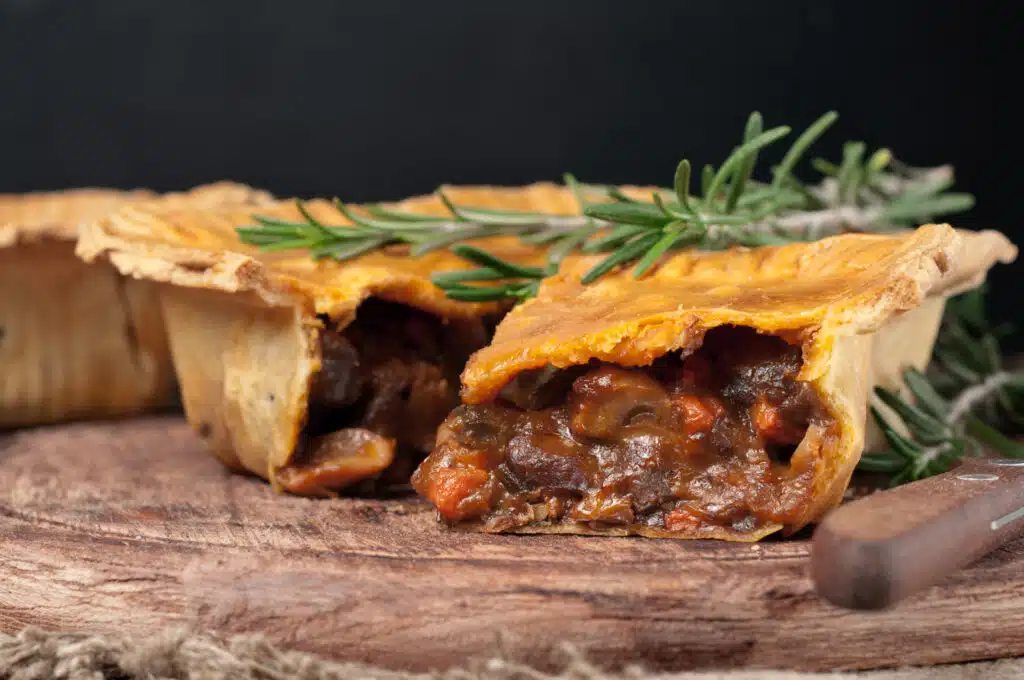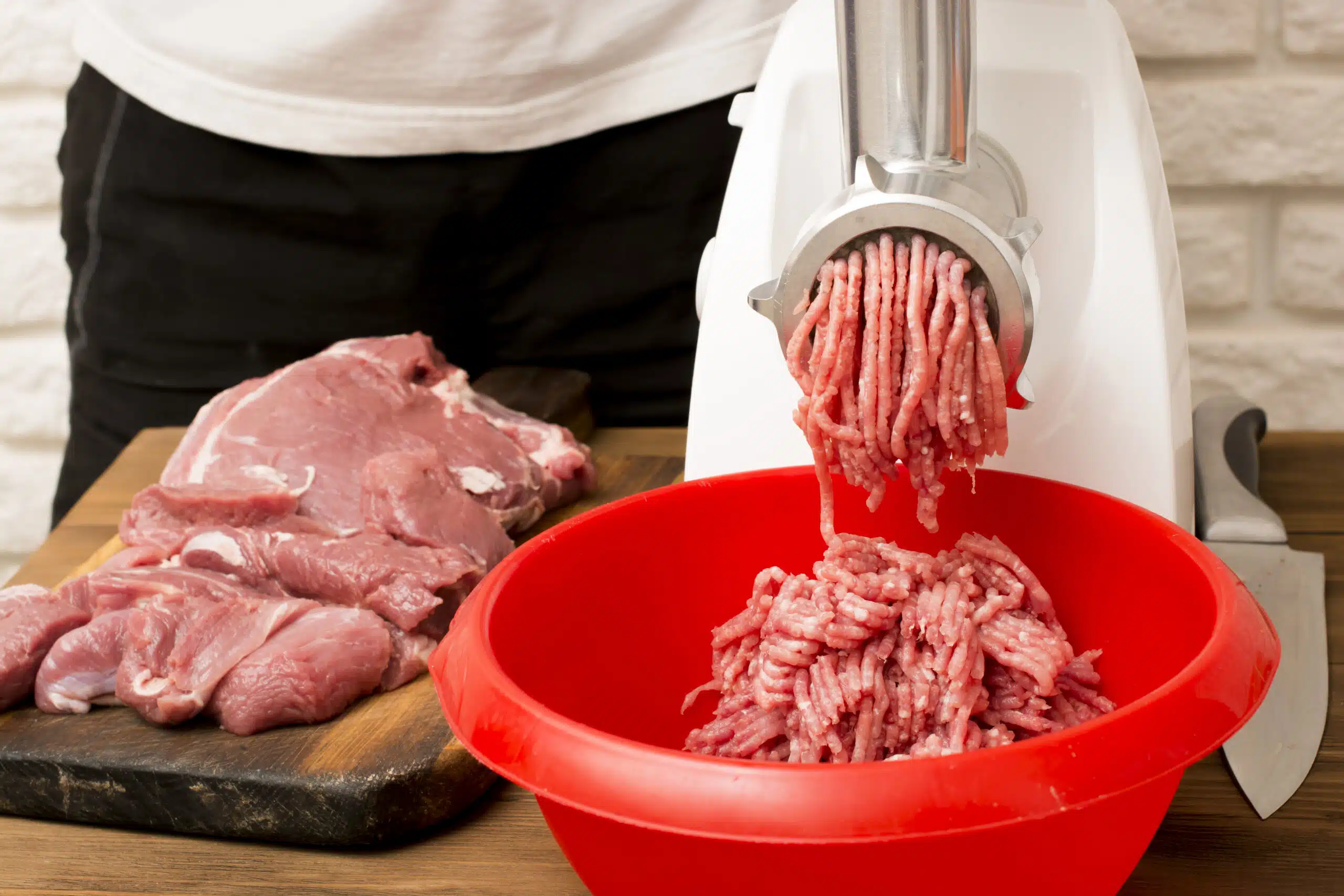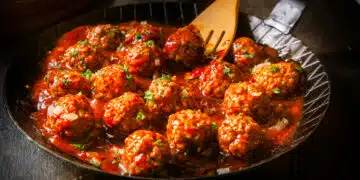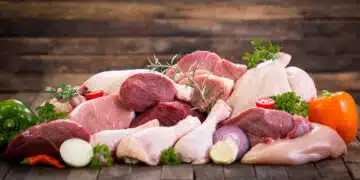Minced meat, a staple ingredient in many kitchens, is skeletal-muscle meat that has been finely chopped, typically using a knife or a grinder. It serves as a versatile and flavorful base for a wide range of dishes from various cuisines globally. The term is often interchanged with ground meat, but it is essential to note that minced meat is usually more coarsely chopped and retains its shape, whereas ground meat is finer and more processed.
Understanding the nuances of minced meat can elevate one’s cooking and allow for a deeper appreciation of its culinary use. Different meats, such as beef, pork, chicken, or lamb, can be minced, each bringing unique flavors and textures to recipes. Additionally, minced meat can be prepared in various ways, such as sautéing, grilling, or simmering into sauces, ensuring ample space for creativity in the kitchen.
As one explores the world of minced meat, it’s essential to consider its quality, health, and nutritional aspects—ensuring that the meat is ethically sourced, fresh, and appropriately stored for maximum safety and taste. Moreover, an old mincemeat tradition differs from the common understanding of minced meat today, which includes sweet-savory mixtures of dried fruits, spices, suet, and sometimes meat. This tradition provides a historical context for the versatility and adaptability of minced meat in culinary applications.
Understanding Minced Meat
Minced meat, also known as “mince” in Commonwealth countries, refers to finely chopped raw meat. It is typically made from skeletal muscle meat and often contains a mixture of lean meat and animal fat. This versatile ingredient can be made from various types of meat, such as beef, pork, and lamb.
Mincing meat involves finely chopping the meat, which can be done with a butcher’s knife and cutting board or using a food processor. Using sharp tools to ensure a consistent, smooth texture is essential. Minced meat is distinguished from ground meat, as the latter is more of an emulsion of lean meat and fat, whereas minced meat is typically choppy and textured.
There are several culinary uses of minced meat, including meatballs, hamburgers, and shepherd’s pie. Mincing the meat allows for a more even distribution of flavors and spices in the dish. Additionally, minced meat can be combined with other ingredients and cooked in multiple ways, such as pan-frying, grilling, or baking. The versatility of minced meat makes it a popular choice in various cuisines worldwide.
Handling and storing minced meat properly is crucial to ensure food safety. Since the increased surface area of minced meat exposes it to a higher risk of bacterial contamination, keeping it refrigerated and using it within a short period is vital. Sealed packaging and freezing can be employed for longer-term storage to maximize freshness and avoid spoilage.
In conclusion, minced meat is a versatile and widely used ingredient known for its unique texture and ability to incorporate flavors. Proper handling and preparation techniques ensure that dishes made with minced meat are delicious and safe to consume.
Methods of Making Minced Meat
Making minced meat, also known as ground meat, involves breaking down meat such as beef, pork, chicken, or turkey into smaller pieces using various techniques. This section will explore two popular methods of making minced meat: using a food processor and the manual knife technique.
Using a Food Processor
A food processor is convenient and efficient for creating homemade minced meat. To use a food processor for mincing meat, follow these steps:
- Cut the meat into one-inch cubes, removing all bones and large pieces of fat.
- Place the cubes in the freezer for 15-20 minutes to firm up the meat, aiding the processing more effectively.
- Add the semi-frozen meat cubes to the food processor in small batches, ensuring not to overcrowding.
- Pulse the food processor until the desired consistency and texture are achieved. Be cautious not to over-process, as this can produce a mushy texture.
- Transfer the minced meat to a plate or container, and repeat the process with the remaining meat cubes.
The food processor method is suitable for producing consistent and even homemade minced meat and requires less manual effort.

Manual Knife Technique
Another method for making minced meat is the manual knife technique. This method involves using a sharp knife and a cutting board to chop the meat into finer pieces. Follow these steps for the knife technique:
- Begin by cutting the meat into thin slices, removing all bones and large pieces of fat.
- Place the thin slices on a cutting board and chop them into smaller, finer pieces. Use a gentle rocking motion with the knife, working across the meat to break it down.
- Work through the meat until the desired consistency and texture are achieved. This method may produce a less consistent texture than the food processor method.
Both of these methods have their advantages and drawbacks. The food processor method is faster and more consistent, while the manual knife technique allows for greater control over the end product’s texture and size. However, homemade minced meat can produce a fresher, more flavorful dish regardless of the method.
Variations of Minced Meat
Type Based on Animal Source
Minced meat, also known as ground meat, can be made from various animal sources, each providing a distinctive flavor and texture. Some common animals used for minced meat include:
- Beef: Minced beef, often used in dishes like hamburgers and meatballs, has a rich flavor and is the most popular choice.
- Pork: Minced pork has a milder taste than beef and works well in meatloaf and sausage recipes.
- Chicken: Minced chicken is a leaner option than beef and pork and can be found in various dishes such as tacos and dumplings.
- Lamb: Minced lamb is flavorful and more delicate than beef, making it a popular choice for traditional Mediterranean and Middle Eastern dishes.
- Turkey: Minced turkey is a low-fat option with a mild flavor, often used as a substitute for beef in recipes like burgers and meatloaf.
Type Based on Fat to Lean Ratio
The fat-to-lean ratio in minced meat can significantly impact its taste, texture, and nutritional value. Common fat-to-lean ratios include:
- 80/20: This ratio refers to 80% lean meat and 20% fat, typically found in ground beef used for hamburgers. This higher fat content provides juiciness and flavor but is not considered a healthier option.
- Lean meat: Lean minced meat, such as chicken or turkey, typically contains around 85% to 95% lean meat and 15% to 5% fat. This ratio makes the meat healthier but may require additional flavoring or moisture in recipes to prevent dryness.
- Extra-lean: Extra-lean minced meat, with over 95% lean meat, can be found in beef and lamb products. It is lower in fat and calories but may lack flavor and juiciness.
Type by Textural Difference
The texture of minced meat varies depending on the grinding process used, resulting in differences in appearance and mouthfeel. Two main textural types include:
- Smooth: Smooth minced meat has been finely chopped or ground, producing a consistent texture suitable for dishes such as meatloaf, pâtés, and terrines.
- Coarse: Coarsely minced meat has a larger particle size, giving it a more rustic texture. This type of mince is often used for dishes like hamburgers and sausages, where a more substantial mouthfeel is desired.
By considering the type of animal, fat-to-lean ratio, and texture of minced meat, one can select the appropriate variety for their desired recipe while considering taste, nutrition, and mouthfeel qualities.
Culinary Uses of Minced Meat
In Meat Pies
Minced meat is a popular ingredient in various meat pies, a savory dish consisting of a pastry crust filled with a mixture of minced or ground meat and vegetables. Traditional meat pies use beef or lamb mince, while chicken or pork mince can also be used. The filling is typically seasoned with a blend of herbs and spices, making a flavorful and satisfying meal.

In Meatballs and Burgers
Meatballs and burgers are among the most well-known dishes that feature minced meat as the main ingredient. Minced beef, pork, or a combination of both can be used to create tender and juicy meatballs or burger patties. Seasonings, breadcrumbs, and eggs are often mixed into the meat, providing additional flavor and helping to bind the ingredients together. These dishes can be served with various sides, condiments, and sauces to suit personal tastes.
In Kebabs
Kebabs, a popular street food in many countries, also frequently utilize minced meat. Ground or minced meat, usually lamb or a mix of meats, is seasoned with spices and formed around skewers before grilling or broiling. The resulting dish is a flavorful, smoky, and tender delight that can be enjoyed on its own or with accompanying sides like rice, salad, or pita bread.
As a Pie Filling
Besides its use in savory meat pies, Minced Pies also finds its place as a sweet-savory pie filling in the form of Mince Pies. Mince Pies is a mixture of chopped dried fruits, spices, distilled spirits, and, historically, beef or venison. Nowadays, the meat component is often replaced by vegetable shortening or suet. This unique and festive filling is popular during the Christmas season and adds a different twist to the culinary repertoire of minced meat.
Minced Meat in Different Cuisines
Minced meat, also known as ground meat, is a versatile ingredient that plays a significant role in various culinary traditions across the globe. It is made by finely chopping skeletal muscle meat, usually from a single animal, using a knife or a food processor. The resulting texture of minced meat is often chunkier than ground meat, allowing it to maintain its shape and chewiness even after cooking.
In the United States, minced meat is a staple ingredient in numerous dishes such as meatloaf, hamburgers, and meatballs. The meat can be mixed with various seasonings, breadcrumbs, and sometimes eggs to bind it together before cooking. Sauces, such as tomato or barbecue, are often used alongside these dishes to add flavor and moisture.
Spaghetti Bolognese originated in Italy and is another prime example of a global dish featuring minced meat. The dish combines minced meat with a rich tomato sauce infused with spices and herbs such as oregano, basil, and marjoram. The meat sauce and a hearty portion of pasta are served, resulting in a satisfying and delicious meal.
In England, the classic minced meat pie combines minced meat with onion, carrot, and peas, all mixed in a rich gravy encased in a flaky, buttery pastry. This quintessential British dish is baked to golden brown perfection, often found in pubs, and is a popular homemade meal. Similarly, although the flavors and spices may vary, Australian meat pies use minced meat in their fillings.
In the Middle East, minced meat is a key component of dishes like koftas and kebabs. The meat is combined with spices such as cumin, coriander, and paprika and then molded into a desired shape before being grilled or baked. These dishes are served with fresh salads or wrapped in flatbreads, accompanied by sauces like yogurt or tahini.
In conclusion, minced meat is a versatile ingredient that features heavily in different cuisines worldwide. Its adaptability allows it to be used in various dishes, blending seamlessly into various culinary traditions while maintaining its unique character and texture.
Mince Pies: A Unique Variant and not to be confused with Mince Meat Pies

Mince Pies are a distinctive variant that has gained popularity, especially during Christmas. It is a delightful mixture of dried fruits, spices, and sometimes even a touch of alcohol, such as brandy. The ingredients blend together to create a rich and flavorful filling often used in pies and other festive treats.
The base of Mince Pies consists mainly of dried fruits like raisins, currants, and apples. These fruits provide a natural sweetness and chewiness that enhances the overall texture of the mixture. In addition to the dried fruits, a selection of warm spices such as cinnamon, nutmeg, clove, and allspice is added. These spices contribute to the warm, comforting aroma commonly associated with the holiday season.
Brandy is often used in Mince Pie recipes to help preserve the mixture and add depth and complexity to the flavor profile. The alcohol content in the brandy also complements the natural sugars found in the dried fruits and can help to create a balanced taste.
Mince Pies are best enjoyed at Christmas when its warm and fragrant spices perfectly complement the festive atmosphere. Combining the natural sweetness of dried fruit, the aromatic influence of spices, and the richness of brandy, mincemeat stands out as a unique and beloved variant of minced meat.
Understanding the Quality of Minced Meat
When selecting minced meat, paying attention to the quality, freshness, and juiciness is essential to ensure a flavorful and safe meal. Minced meat is made from finely chopped skeletal-muscle meat, which offers a leaner and crumblier texture as compared to ground meat. To ensure top-quality minced meat, consider the following factors:
Color: Fresh minced meat is generally bright red, signifying sufficient oxygenation. Brown or grayish shades might indicate the meat is past its prime or has been exposed to air for an extended period.
Packaging: Check the packaging for any signs of tampering, punctures, or bloating. Steer clear of any damaged packages, as they can compromise the freshness of the meat.
Smell: Fresh minced meat should have a natural meaty aroma, devoid of off or sour smells. An unpleasant odor often indicates spoilage.
Fat Content: The fat content in minced meat affects its juiciness and flavor. Ground chuck is a popular choice for all-purpose minced meat containing 15 to 20% fat. For leaner options, the ground round offers about 12% fat content.
To maintain the quality and freshness of minced meat at home, follow these tips:
- Store it in the refrigerator below 40°F, using it within 1 to 2 days of purchasing.
- If you plan to use it later, freeze the meat in an airtight container or freezer-safe zip-top bag and consume it within 3 to 4 months.
- Thaw frozen minced meat in the refrigerator, microwave, or cold water, and cook it immediately afterward.
By paying attention to these quality indicators and storage techniques, you can confidently select, purchase, and cook with minced meat that meets high standards for taste and safety.
Health and Nutritional Aspects
Minced meat, also known as ground meat, is a versatile ingredient used in various dishes. It is created by finely chopping meat, often using a meat grinder, giving it a coarser texture than other cuts of meat.
One of the key aspects of the nutritional value of minced meat is its calorie content. A 3.5-ounce (100-gram) serving of broiled ground beef with 10% fat content contains approximately 217 calories. The specific calorie content can vary depending on fat content and processing techniques.
When it comes to processed meats, it is essential to consider their potential impact on health. Processed meats are often associated with increased health risks due to preservatives, additives, and high sodium levels. However, minced meat is typically less processed than other forms of meat like sausages or hot dogs and can be a healthier choice.
A healthier option when selecting minced meat is to choose leaner cuts. Leaner varieties contain a lower percentage of fat, providing an improved nutritional profile. This can be beneficial in maintaining a balanced diet and contributing to heart health. To make an informed selection, checking the labeling on minced meat products for fat content information is crucial.
In summary, the nutritional aspects of minced meat will depend on factors such as fat content and processing techniques. By choosing leaner cuts and incorporating it into a balanced and varied diet, minced meat can be a valuable source of protein and nutrients.
Notable Incidents
In recent history, one significant incident involving minced meat was the horse meat scandal in 2013. The scandal broke out after discovering that various meat products sold in the European market were contaminated with undeclared horse meat. This revelation shocked consumers, as they unknowingly purchased and consumed meat that wasn’t accurately labeled, raising concerns about transparency and food safety.
The horse meat scandal began when Irish authorities found traces of horse DNA in beef burger products. As investigations continued, it became clear that this wasn’t an isolated case and that the issue spread across multiple European countries. A broader problem emerged, implicating a complex supply chain that included producers, suppliers, and retailers.
Governments and regulatory authorities in affected countries took action in response to the scandal. They conducted extensive testing on meat products, recalled contaminated items from the market, and enforced stricter regulations on the meat industry. Additionally, some countries introduced legislation that required more transparent labeling and stricter penalties for companies that violated these laws.
Although no serious health risks were directly linked to the consumption of horse meat, the scandal raised questions about the authenticity and trustworthiness of processed minced meat products. It also increased consumers’ awareness of the importance of understanding the source of their food and the need for transparency in the industry.
Frequently Asked Questions
What are the different types of minced meat?
Minced meat can be made from a variety of different cuts of meat, including beef, pork, lamb, and poultry. The specific cut can affect the final product’s flavor, texture, and fat content. Some common cuts used in minced meat include chuck, round, and flank steak.
How is minced meat prepared?
Minced meat is prepared by finely chopping or grinding the meat using a food processor or mincer. The desired consistency can be achieved by controlling the coarseness of the blade or the number of times the meat is processed. After mincing, the meat can be used in various dishes or stored later.
What dishes can be made with minced meat?
Numerous dishes can be made using minced meat (see our thousand-plus recipes). Some popular examples include burgers, meatballs, pasta sauces, tacos, and pies. Minced meat is a versatile ingredient that can be used in various international cuisines to create a range of flavorful and satisfying meals.
Can I substitute ground beef for minced meat?
While ground beef and minced meat are similar, they have some texture and consistency differences. Ground beef is often more finely ground and may have a smoother texture, making it suitable for certain dishes like meatloaf. However, many recipes, such as chili or stews, can be used interchangeably without significantly altering the final product.
What is the difference between minced meat and ground meat?
Minced meat is typically more coarsely chopped and has an irregular, chunky texture than ground meat. When cooked, minced meat tends to hold its shape better, while ground meat often has a smoother texture and can melt into sauces and stews more easily.
How can I store minced meat?
Minced meat can be stored in an airtight container in the refrigerator for up to 2 days. If you need to store it for a longer period, it is recommended to wrap it tightly in plastic wrap or aluminum foil and store it in the freezer, where it can last for up to 3 months. To defrost, move the frozen minced meat to the refrigerator for 24 hours or use the defrost setting on your microwave.











